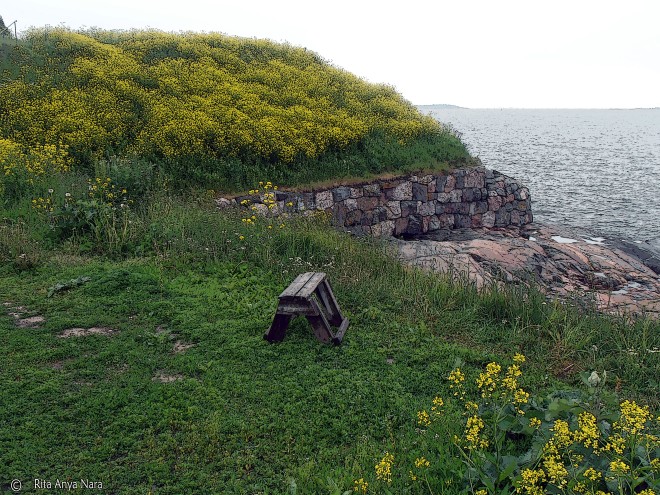Still hungry to take a road trip abroad this spring or summer? If you’ve been following this series, you know there are a lot of things you need to understand before you jump into a vehicle with keys in one hand and your passport in the other. Don’t get discouraged — you won’t encounter all of these “issues” on every drive. But, since life on the road can be unpredictable to say the least, being aware of these pitfalls and potholes can keep you out of trouble almost as much as, well, wearing your seatbelt. So buckle up and take one last ride down the path of precautions — and remember, there’s no yield sign for common sense.
14. Suicidal pedestrians who have the right of way
In many popular urban areas, there are (of course) a lot of pedestrians – and not a whole lot of stoplights. And where there are stoplights, pedestrian crossings and/or lights may be nonexistent. Many people on foot can be downright reckless once they’ve gotten used to this situation, and they decide to “take the power back into their hands.” You will see people wading into six-lane traffic a few feet at a time, with all the care and worry as if they’re playing a live-action video game.
It’s their fault if they get hit, right? Um, usually not. In many countries, if you hit a pedestrian, you’re deemed automatically guilty even if some guy leaped right out in the street in front of you (and you were driving like a saint to boot). You may face serious criminal charges or other legal liability. Understand the laws, avoid driving near malls, parades, markets, etc., and keep one foot perpetually ready to slam on the brake when venturing into pedestrianized areas.
15. Speed Traps
Even where people drive like maniacs (no, no, I’m not thinking of Germany, or Saudi Arabia), speed limits exist not only in an attempt to control the chaos, but to, well, extort money out of distracted drivers. Speed traps are as ubiquitous as speed limits; many times they are synonymous. Speeding is one of the most enforced traffic laws of all, with both police units and cameras. Crooked and/or lazy cops love to set speed traps in scenic areas because they know guest drivers are looking around, and are distracted from the speedometer.
One thing that varies by country is how much grace you are given above the speed limit before actual consequences kick in. In some countries or regions you can go 10 miles or kilometers over the speed limit and not raise a cop’s eyebrow; in others, one notch above the listed limit and a self-righteous policeman is ready to jump on his motorbike. Your most reliable source of info regarding local speed traps is probably your hotel receptionist; tour books are probably not going to be that specific.
16. Fueling up
Unfortunately, some of the places in the world with the cheapest fuel also have the most frustrations when it comes to actually filling up your tank. First off, the consistent availability of gas stations isn’t a given; you may encounter five gas stations in the same two miles, and then none for a very long suburban stretch. It’s therefore recommended to fill your tank often, even if it means breaking your momentum when you’ve finally gotten out on the open road.
When you do get to a station, lines can leave you hanging precariously out into the street, and you may have to be aggressive to nab a spot next to the pump. It usually doesn’t take long to notice if a gas station is full- or self-service. If the latter, beware when actually handling the pump and hose, as many may be in poor shape and send a stream of gas across your feet.
Increasingly common – much to the chagrin of visiting tourists – are stations that only accept credit or debit cards issued by banks in that country. These are usually unmanned, so try to pick a gas station that at least has an attendant milling around to minimize getting stuck with your wad of cash and empty tank.
17. Getting stopped
In many countries, an officer may only stop a motorist for an actual violation. In others, they may stop you for no reason at all except to check your documents. Keep your cool if you’re pulled over and remember to keep your passport, the rental car registration, and your driver’s license ready to show. Finally, avoid getting out of the car unless the officer makes it clear that you’re expected to do so.
18. Driving across an international border
Most countries share land borders with at least a couple other countries, and in most cases, there are roads running from one country to the other. Generally, these borders can be crossed by anyone in a motor vehicle, and thankfully in many cases, you’re allowed to drive a rental car across an international border. This is the case for the United States and Canada, and in most of Europe.
In some countries, however, it’s difficult or impossible to drive across the border. In Israel, for example, you’re generally not allowed to drive into neighboring countries. To know if you’re allowed to make an international border crossing, examine your vehicle’s rental contract. If you’re planning a trip across multiple countries, you may have to go with one of the big-name companies (Budget, Avis, etc.) with the more flexible policies.
Be aware that there are some bordering countries that don’t have any roads connecting them, even though they share a land border. There’s usually a good reason for this: natural terrain (such as a rough mountain pass); a rich country-poor country scenario in which the latter country can’t afford to lay road base; security reasons; or neighboring countries that just plain hate each other, or simply the lack of desire among one or both governments to build such a road. Examples of regions with a lack of road connectivity are South America, many parts of Africa, and Central Asia.
Where you can cross the border, be aware that it’s not uncommon for there to be a very long line at the crossing. Try to get information from your hotel or travel agent on how long you might spend at the border crossing and factor that into your travel time. While the distance itself may seem short, you may need to add several more hours to your travel time to factor in time spent at the border. In many places, it could be several hours, and this can make a day trip to the other country rather impractical.
Finally, keep in mind that some border crossings have limited hours of operation, such as during daylight hours only. Plan ahead, or the hotel you booked on “just the other side” might be counting you for a no-show.
19. GPS
Many of us have grown addicted to GPS systems to help us navigate, and while it’s readily available in North America, Europe and East Asia, it may be altogether absent in the countries where you could use it the most. If you don’t want to throw back to the Stone Age and use a paper map, try using Mapquest or Google Maps on the road or shortly before your trip – but be aware that many mobile phone providers make it difficult to use your smartphone in a foreign country.
Finally, be aware that GPS units make very hot theft items in many foreign countries. Don’t under any circumstances leave one in your rental vehicle overnight, even if you’re parked at an upscale hotel.
20. Missing features on your rental car
We take for granted that cars come with the things that they should. I’m not talking about iPod docks, Bluetooth, or even automatic windows and air bags, but true necessities like hazard lights and head rests to save your neck in case you are in an accident. If you plan to drive in a developing country, you should check a rental car for the following before signing on the dotted line.
- Turn signals
- The parking/emergency brake
- Windshield wipers
- Lights and brights
- Spare tire
- Seat belts
Don’t count on your rental car having cruise control, but if it does, make sure you know how it turns on — and how to disengage it. Also, be sure you understand how to open the hood and the gas tank before you drive off. Remember, given the number and variety of auto manufacturers around the world, you may be renting a car that you have never seen or heard of – look closely to make sure it has what you expect to come on a “car”!

Keep your patience on those long, frustrating roads, and you will eventually be rewarded with the stunning scenery you came for!










